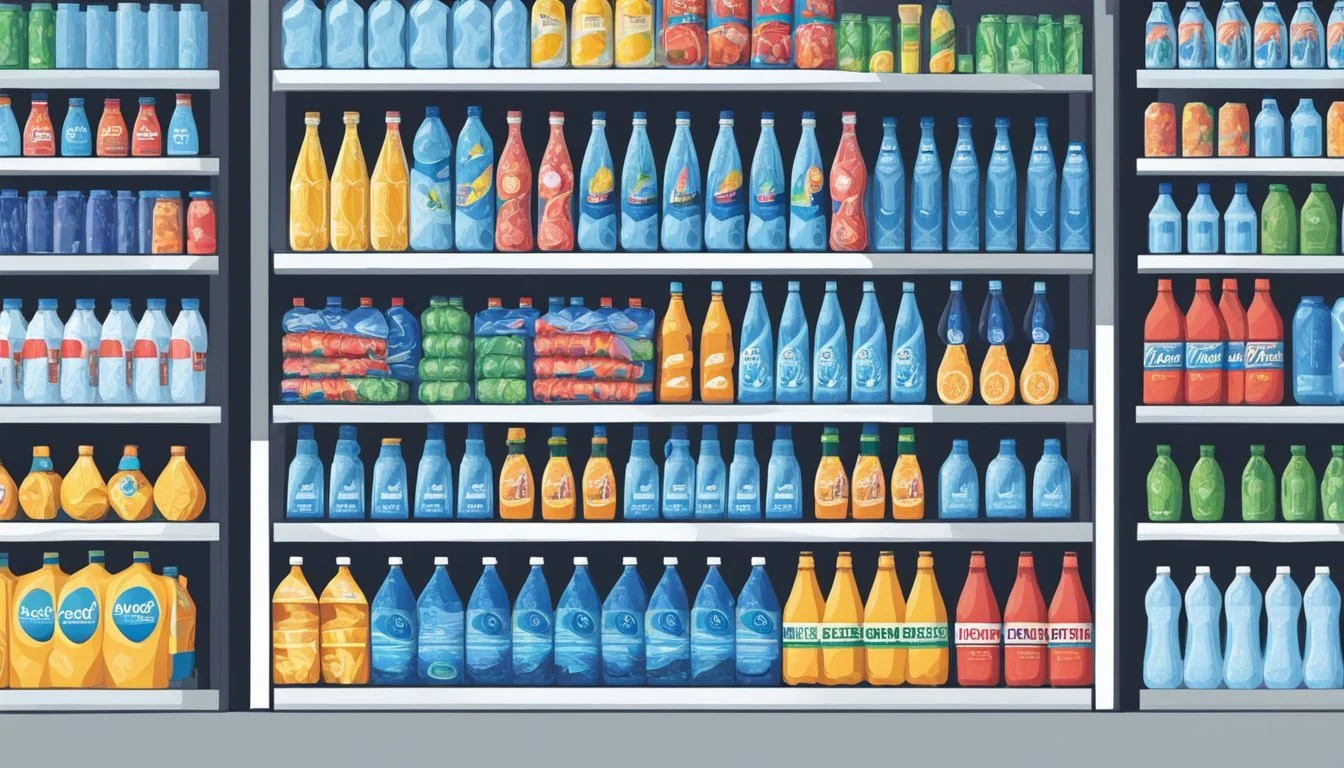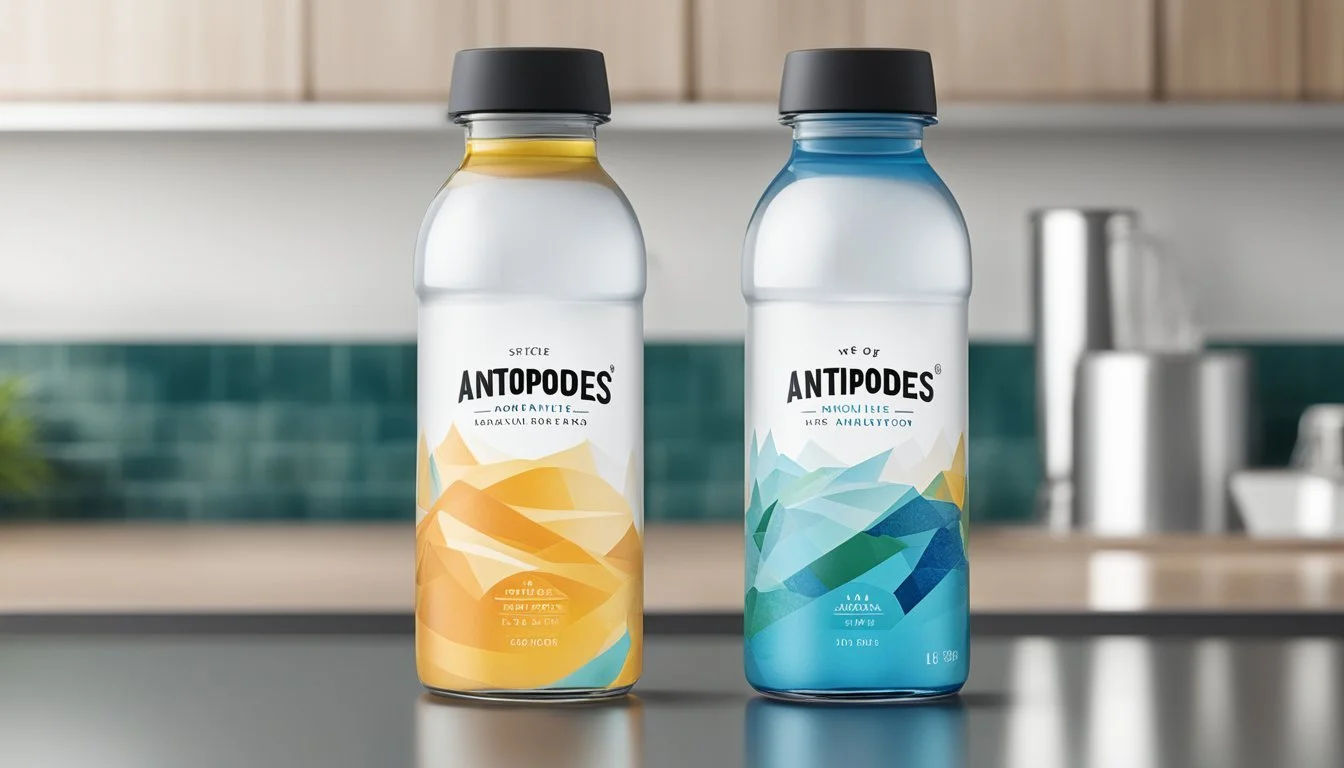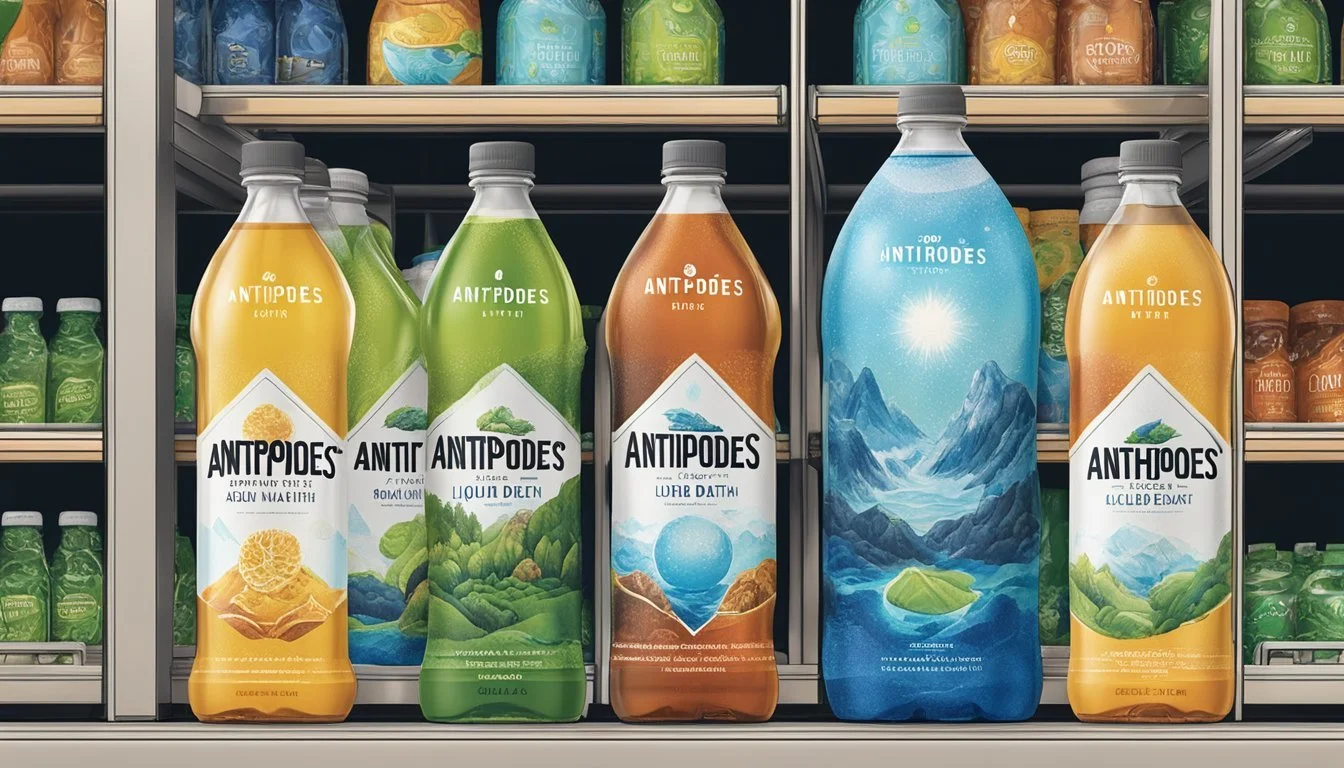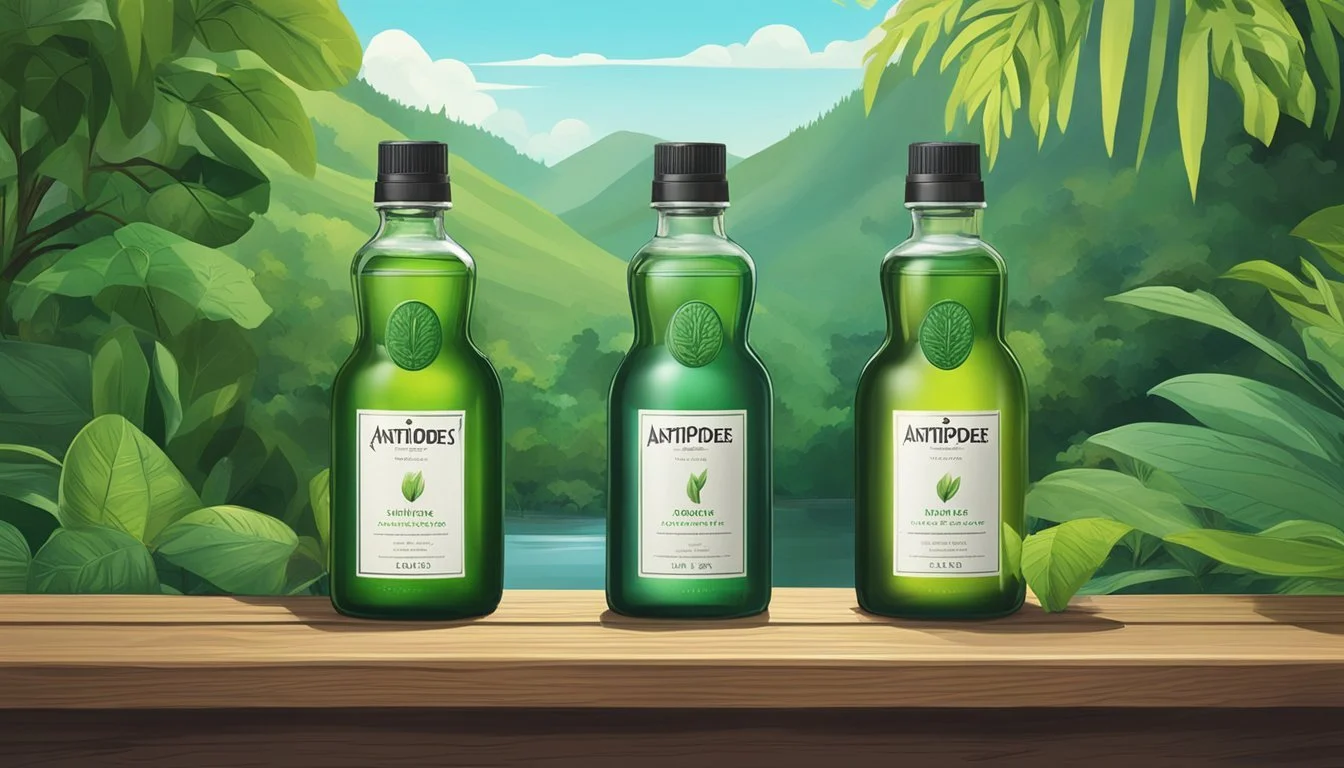Antipodes vs. Liquid Death
A Comparative Analysis
Bottled water choices often boil down to personal preference and lifestyle. Antipodes, sourced from a pristine New Zealand aquifer and packaged in a tasteful glass bottle, offers a luxurious option for those who prioritize high quality and sustainability. In contrast, Liquid Death, with its edgy branding and environmentally conscious aluminum cans, appeals to those seeking convenience and a unique market presence.
Antipodes boasts a simple, light taste that reflects its pure origin, making it a premium choice for fine dining and special occasions. Liquid Death, available in both sparkling and flat varieties, provides a refreshing alternative with the added benefit of being packaged in eco-friendly cans.
Ultimately, the choice between Antipodes and Liquid Death depends on individual preferences and priorities. Whether it's the elegance and purity of Antipodes or the bold, sustainable approach of Liquid Death, each brand has distinct features that cater to different consumer needs.
Overview of Antipodes and Liquid Death
This section discusses the histories, philosophies, and product ranges of the Antipodes and Liquid Death water brands.
Brand Histories and Philosophies
Antipodes is a premium bottled water brand from New Zealand. It prides itself on purity and sustainability. The water is naturally sourced from an aquifer deep in the North Island. The brand emphasizes environmental responsibility with its glass bottle packaging and carbon-neutral certification.
Liquid Death takes a different approach with its bold branding and rebellious image. Sourced from the Austrian Alps, the water is packaged in sustainably produced aluminum cans. Their slogan, "Murder Your Thirst," targets a younger, edgy demographic. Liquid Death also highlights its environmental efforts, with a significant portion of profits going to fight plastic pollution.
Product Ranges
Antipodes offers still and sparkling water varieties. Its focus is on simplicity and purity, with no added flavors or enhancements. The minimalist design of the bottles appeals to a high-end market, often found in gourmet restaurants and luxury hotels.
Liquid Death provides both still and sparkling options. Distinct from many competitors, it also features unique flavored sparkling water. The cans come in various artistically designed graphics, contributing to its unique brand identity. Availability spans numerous retail outlets, including Whole Foods and online platforms, ensuring a broad market reach.
Environmental Impact and Sustainability
Understanding the environmental impact and sustainability of bottled water products is essential. This section compares Antipodes and Liquid Death in terms of their packaging materials, recycling processes, and eco-friendly initiatives.
Plastic Bottles vs Aluminum Cans
Antipodes uses plastic bottles, while Liquid Death opts for aluminum cans. Plastic bottles are lighter, making them cheaper to produce and ship. However, they contribute significantly to plastic pollution and take hundreds of years to decompose.
Aluminum cans, on the other hand, are heavier but have a lower environmental cost during transportation due to their lightweight nature. Aluminum is also infinitely recyclable, meaning it can be recycled repeatedly without loss of quality, unlike plastic which degrades.
Recycling and Waste Management
When it comes to recycling, aluminum is far superior. Recycling rates for aluminum cans are notably higher than for plastic bottles. Aluminum cans can return to the shelf as new cans within 60 days of being recycled, emphasizing their efficiency.
Plastic bottles are often downcycled into less useful products, meaning they eventually end up in landfills. This contributes to long-term environmental damage and increases the burden on waste management systems. Consumers often find it easier to recycle aluminum given its clear recycling streams compared to the complexity of plastic sorting.
Environmental Initiatives and Charities
Both Antipodes and Liquid Death engage in various environmental initiatives. Liquid Death partners with nonprofits to clean up plastic waste from the environment and uses their platform to raise awareness about plastic pollution. They emphasize their use of eco-friendly aluminum packaging to promote sustainability.
Antipodes also participates in eco-friendly initiatives, often focusing on the purity and sustainability of their water sources. They support local environmental projects and charities, aiming to mitigate their environmental impact despite using plastic bottles.
In summary, Liquid Death's choice of aluminum cans, combined with its recycling efforts and environmental initiatives, positions it as a more sustainable option compared to Antipodes's plastic bottles.
Health and Quality Considerations
When comparing Antipodes and Liquid Death bottled waters, several key factors demand attention. These include the source and purity of the water, its pH levels and mineral content, and the packaging quality.
Water Source and Purity
Antipodes sources its water from pristine aquifers in New Zealand, which is known for its high-quality natural water reserves. The water undergoes minimal processing, retaining its natural purity.
Liquid Death sources its water from underground mountain sources, marketing it as untouched until it reaches the can. This ensures a high level of purity, with regular testing to ensure no contaminants.
Both brands emphasize the purity of their sources, but Antipodes often highlights its New Zealand origin, a renowned region for clean water.
PH Levels and Mineral Content
Antipodes water has a slightly alkaline pH of around 7.5 to 8. The mineral content includes natural electrolytes like calcium, magnesium, and potassium, which can contribute to hydration and overall health.
Liquid Death offers both flat and sparkling water options, with pH levels typically neutral around 7. Both versions contain natural minerals, making them beneficial for hydration.
The pH and mineral content of both brands support a healthy balance, but Antipodes's slightly alkaline nature might appeal more to those seeking alkaline water benefits.
Packaging and Water Quality
Antipodes bottles its water in glass, which is recyclable and considered one of the best options for maintaining water purity as it avoids chemical leaching. The packaging promotes environmental sustainability.
Liquid Death uses aluminum cans for its packaging. Aluminum is also recyclable and considered a better alternative to plastic, reducing the risk of contaminants like BPA.
Both brands make strong environmental claims about their packaging. Antipodes supports glass for its purity benefits, while Liquid Death emphasizes its use of aluminum to reduce plastic waste.
Marketing Strategies
In comparing the marketing strategies of Antipodes and Liquid Death, it is necessary to explore their unique approaches to branding and design, celebrity endorsements, and social media presence.
Branding and Design
Liquid Death has revolutionized the bottled water market by adopting an edgy, energy-drink-like design. The brand, inspired by the outlaw archetype, uses provocative imagery and slogans like "Murder Your Thirst." This approach distinguishes it from traditional water brands like Coca-Cola and Pepsi. The use of a bold, skull-themed can makes Liquid Death easily recognizable and memorable.
Antipodes takes a more refined and minimalist approach. The brand emphasizes its premium nature through elegant and clean design. Its glass bottles are marketed as eco-friendly and luxurious, aligning with an upscale image. This style appeals to discerning customers who value sophistication over shock value.
Celebrity Endorsements and Partnerships
Liquid Death leverages high-profile endorsements and strategic partnerships to further its brand. Partnering with notable figures such as Travis Barker, they tap into various fanbases. Such endorsements create a perception of coolness and rebellion that aligns with their branding. Additionally, collaborations with platforms like Netflix for unique promotional videos amplify their reach.
Antipodes focuses on partnerships that enhance its premium image. Aligning with luxury hotels and restaurants, the brand gains access to a high-end consumer base. These establishments often choose Antipodes for its aesthetic and the quality of its water, reinforcing its status as a top-tier product.
Social Media Presence
Liquid Death has a robust presence on platforms like Instagram and TikTok, using humorous and irreverent content to engage its audience. The brand excels in creating viral campaigns that emphasize fun and anti-establishment vibes. Their social media strategy is aggressive and consistent, aiming to build a loyal follower base.
Antipodes adopts a more restrained social media strategy, focusing on pristine visuals and environmental themes. Their content often highlights the purity of the water and the elegance of the brand. This appeals to audiences who appreciate subtlety and environmental consciousness. While not as viral, their approach maintains a steady and loyal following who resonate with these values.
Consumer Experience
Antipodes and Liquid Death offer distinct experiences that range from taste and flavor varieties to packaging formats and availability. Understanding these differences helps consumers make informed choices about their bottled water preferences.
Taste and Flavor Varieties
Antipodes is known for its pure, mineral-rich taste, which is often appreciated by those who prefer a clean and smooth water profile. It is available as still water and is recognized for its neutral pH balance, making it suitable for pairing with food.
Liquid Death, on the other hand, offers both still and sparkling water options. The sparkling water has a refreshing and crisp taste, appealing to those who enjoy carbonated beverages. Although it primarily focuses on unflavored water, its unique branding often attracts a broader audience looking for a bold, distinct drinking experience.
Packaging Formats
Antipodes emphasizes eco-friendly packaging, using glass bottles, which helps maintain water purity and supports sustainability efforts. These bottles have a sleek, minimalist design that appeals to consumers who value aesthetics and environmental consciousness.
Liquid Death packages its water in aluminum cans, claiming it to be more environmentally friendly than plastic. This packaging is not only recyclable but also designed to look edgy and unconventional, playing into its rebellious brand image. This design choice aims to attract a younger, sustainability-conscious demographic.
Availability and Accessibility
Antipodes can be found in high-end grocery stores and specialty food retailers, such as Whole Foods and certain upscale restaurants. Its higher price point and premium placement can make it somewhat exclusive, but it remains accessible to those who prioritize quality and sustainability.
Liquid Death has a broader distribution network. It is available at major retailers like Whole Foods and Target, and can also be purchased online through platforms like Amazon. This widespread availability ensures that it is easy to find for a wide range of consumers, making it a convenient option for those seeking both still and sparkling water.
Economic Aspects
When comparing Antipodes and Liquid Death, price points and market presence are critical factors. Understanding where each brand is positioned in the market can help determine which offers the best value for money.
Price Comparison
Antipodes positions itself as a premium water brand, often found in high-end stores such as Whole Foods. Its pricing reflects its premium status, making it part of the expensive water category.
Liquid Death, on the other hand, markets itself through unique branding and packaging. Available at more mainstream retailers like 7-11 and Sprouts, it ranges from mid to high pricing tiers, depending on the purchase venue and quantity.
For instance, Antipodes typically sells at $3-$5 per 500ml bottle, whereas Liquid Death is priced at about $1.79 per can. Bulk options further diversify the pricing, with discounts available through platforms like Amazon.
Sales and Market Presence
Antipodes has a niche market presence, primarily targeting eco-conscious and health-oriented consumers. Its distribution is robust within specialized health stores and selective online platforms.
Liquid Death distinguishes itself through unconventional branding. With slogans like "Death to Plastic," it appeals to environmental advocates and younger demographics. Its availability in both standard convenience stores and major online retailers such as Amazon expands its reach significantly.
While Antipodes's sales are steady within a select market, Liquid Death's aggressive marketing campaign and widespread distribution have contributed to notable sales growth. Retail partnerships and online sales channels have been pivotal for Liquid Death's expanded market presence compared to Antipodes's more limited consumer base.
Conclusion
Antipodes and Liquid Death cater to different consumer preferences. Antipodes emphasizes its eco-friendly approach with glass bottling, appealing to environmentally conscious consumers.
Liquid Death, on the other hand, offers aluminum packaging, which is seen as a healthier alternative to plastic. Both brands provide hydration through quality water sources.
For those focused on taste and pH balance, both brands offer reliable options. Antipodes may appeal to those seeking premium bottled water with a refined taste. Liquid Death is often appreciated for its unique marketing and convenience.
When it comes to accessibility, Liquid Death is widely available at major retailers like 7-11, Sprouts, and Whole Foods. Antipodes may be more limited in availability but is often found in specialty stores.
In terms of environmental impact, consumers need to consider their preferences for packaging. Glass is reusable and recyclable, while aluminum is more sustainable than plastic.
Consumer Choice ultimately depends on individual preferences for taste, packaging, and availability. Both brands stand out in the bottled water market, each offering unique benefits.








